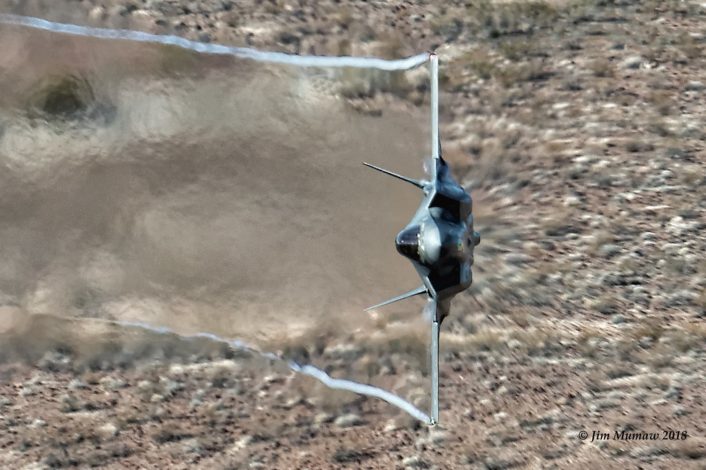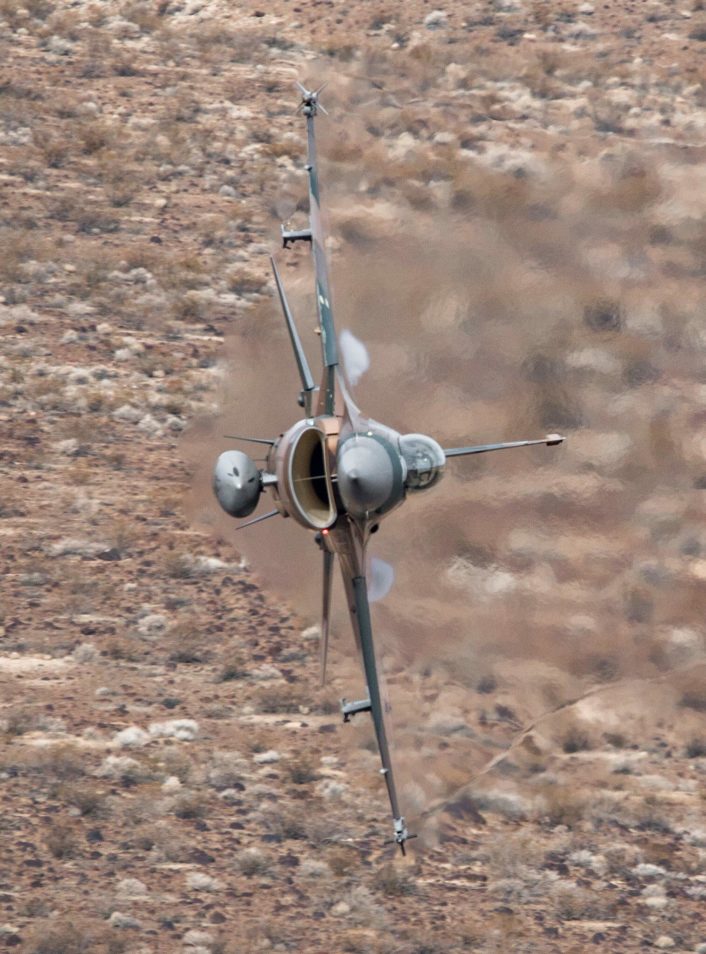This image of an Aggressors F-16 provides an opportunity to see heat distortion “at work” and compare it to shock wave distortion.
Here’s another stunner. The image in this post was taken on Dec. 20, 2018, by photographer Christopher McGreevy and shows an Aggressors F-16C (AF86-0299) belonging to the 64th Aggressors Squadron from Nellis Air Force Base, flying through the famous Jedi Transition, aka “Star Wars Canyon”.
The shot is extremely interesting especially if we compare it to the one we have posted a few days ago of an F-35A flying the same low level segment through the Panamint Valley region of Death Valley National Park.
Here it is again:

In fact, the one of the Lightning II aircraft was noteworthy because, as this Author wrote:
“while the jet wash and heat wave from the exhaust are obvious and common in many photographs, there is also a subtle change. There is distortion at the belly of the fighter (right side of the photo) which almost appears to be that of a camera being zoomed out during the shot. However, if this were the case, the effect would be seen throughout the entire image which it’s not.
[…]
shock waves, generated by pressure gradient resulting from the formation of supersonic flow regions, represent the location where the air moving at supersonic speed transitions to subsonic. When the density of the air changes (in this case as a consequence of shock waves) there is a change in its refractive index, resulting in light distortion.
Generally speaking, shock waves are generated by the interaction of two bodies of gas at different pressure, with a shock wave propagating into the lower pressure gas and an expansion wave propagating into the higher pressure gas: an aircraft maneuvering at high-speed through the air creates a pressure gradient that generate shock waves at speed much lower than the speed of sound.
Some readers mistakenly thought that the distortion you can see in the belly area of the F-35 (rx side of the shot) was caused by heat of the exhaust.
However, diffraction from a shock wave and distortion from heat have very different distinctive features: heat tends to “blur” the background, whereas shock waves tend to act in straight lines (exactly as shown in the right side of the F-35 image or in the canopy area of this Eurofighter shot taken by photographer Richard Cliff) There is no way heat can distort light in the same way as shock waves do.
This is clearly shown in the F-16 image taken by McGreevy where heat distortion is exactly the same on both “sides” of the aircraft.
Here’s the full, impressive, shot.














